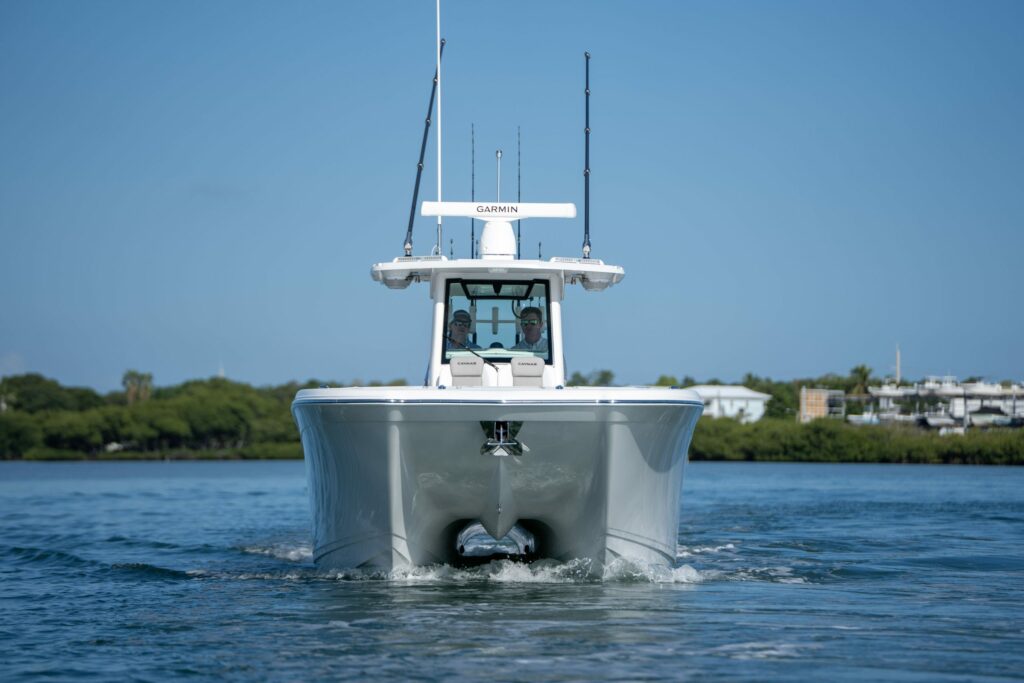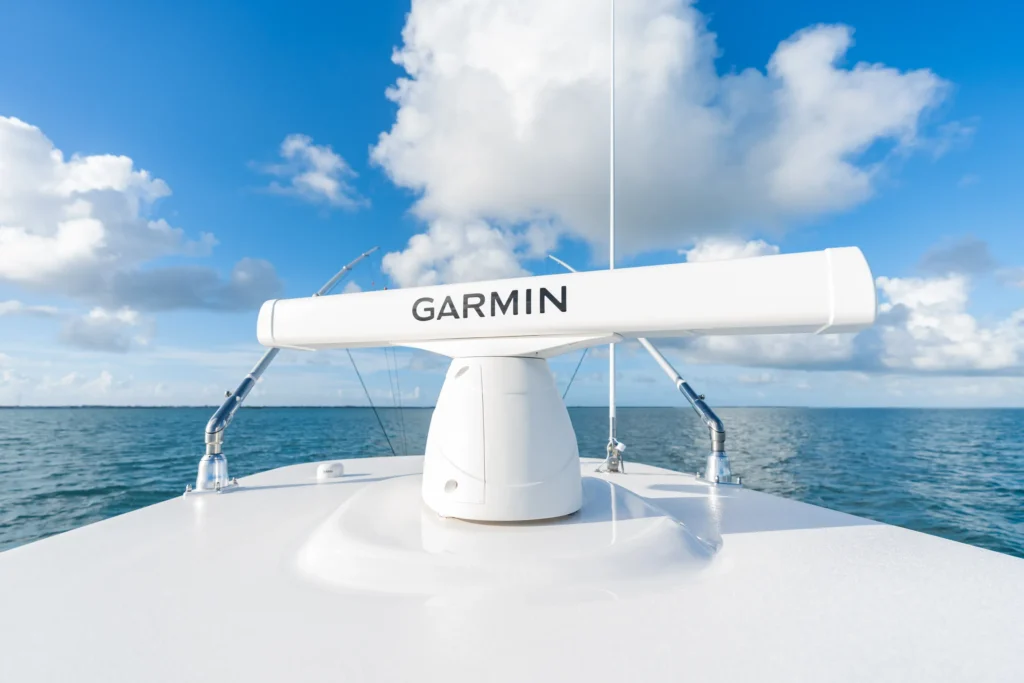Running offshore before dawn or navigating through fog requires more than good eyesight. A quality marine radar system transforms your center console into an all-weather fishing machine. This guide helps you choose between compact domes and powerful open arrays.
Why Marine Radar Matters for Your Boat
Modern marine radar systems do more than prevent collisions in poor visibility. Today’s technology offers multiple benefits:
- Bird mode locates diving seabirds over feeding fish
- Weather tracking helps you avoid squalls
- Target tracking alerts you to approaching vessels
- Enhanced safety during night navigation
For serious offshore anglers and cruisers, radar is essential safety equipment that improves fishing success.
Dome vs. Open Array Radar Systems
Radome Systems
Radome systems house the antenna inside a protective dome, typically 18 to 24 inches in diameter. These are the most popular choice for center consoles.
Key advantages include:
- Compact and lightweight design
- Minimal maintenance requirements
- Performance up to 48-72 nautical miles
- Affordable pricing from $1,500-2,500
- Lower wind resistance at high speeds
- Easy installation on T-tops
Open Array Systems
Open array systems feature an exposed rotating antenna in 3 to 6-foot lengths. These offer superior performance for serious offshore operations.
Consider these factors:
- Better target separation and range
- Ideal for 50+ mile offshore runs
- Higher cost ($3,000-8,000+)
- Heavier weight and mounting requirements
- Periodic maintenance needed
Matching Radar Size to Your Center Console
21-26 Foot Boats
An 18-inch radome provides excellent collision avoidance and weather tracking within 12-24 miles. Perfect for inshore to near-shore fishing.
27-32 Foot Boats
A 24-inch radome or 3-foot open array delivers the range needed for regular offshore runs. This is the sweet spot for tournament fishing boats.
33+ Foot Boats
A 4-foot or larger open array makes sense for extended offshore trips beyond VHF radio range. Ideal for challenging navigation conditions.

Electronics Integration Matters
Marine electronics work best within the same manufacturer’s ecosystem. Garmin displays pair perfectly with Garmin radar. Raymarine users benefit most from Raymarine systems.
This integration ensures:
- Seamless radar overlay on navigation charts
- Advanced targeting features
- Intuitive single-screen controls
- Maximum functionality
While mixed brands can work through NMEA 2000 networking, you’ll lose advanced features that make modern radar powerful.
Professional Installation Considerations
Radar mounting location significantly impacts performance. The ideal position is high on your T-top or hardtop, centered with clear 360-degree views.
Professional installation addresses:
- Weight distribution and structural support
- Proper cable routing and management
- Interference prevention with other electronics
- Waterproof connections for marine environments
Expert Radar Installation by Black Label Marine Group
Choosing the right marine radar is just the beginning. Proper installation ensures optimal performance and reliability when you need it most.
Black Label Marine Group has the expertise to help you select the perfect radar system for your specific boat and fishing style. Our team understands center console rigging challenges, from structural considerations to seamless electronics integration.
We ensure your radar is mounted at optimal height with professional cable management and waterproof connections that withstand harsh marine conditions.
Whether you’re upgrading to your first radar system or replacing older technology, Black Label Marine Group has the knowledge and experience to rig your center console right. Contact us today to discuss which radar solution is perfect for your vessel and how we can make your time on the water safer and more productive.
The size depends on your boat length and usage. For boats 21-26 feet, an 18-inch radome is sufficient for inshore and near-shore use. However, boats 27-32 feet benefit from a 24-inch radome or 3-foot open array for regular offshore trips. Meanwhile, boats 33+ feet should consider a 4-foot or larger open array for extended offshore
First, a radome houses the antenna in a sealed protective dome (18-24 inches), requiring no maintenance and costing $1,500-2,500. On the other hand, an open array features an exposed rotating antenna (3-6 feet long). While it offers better range and target separation, it costs more ($3,000-8,000+) and requires periodic maintenance.
Absolutely. Marine radar provides essential safety for collision avoidance in fog or darkness. Additionally, it tracks weather systems and helps locate feeding fish through bird mode. As a result, it’s critical safety equipment that also improves fishing success when running offshore.
Generally, radar performs best mounted high on the centerline of your T-top or hardtop with clear 360-degree views. Specifically, height improves range due to radar horizon, while central mounting ensures no blind spots. Moreover, professional installation accounts for weight distribution and interference with other electronics.



